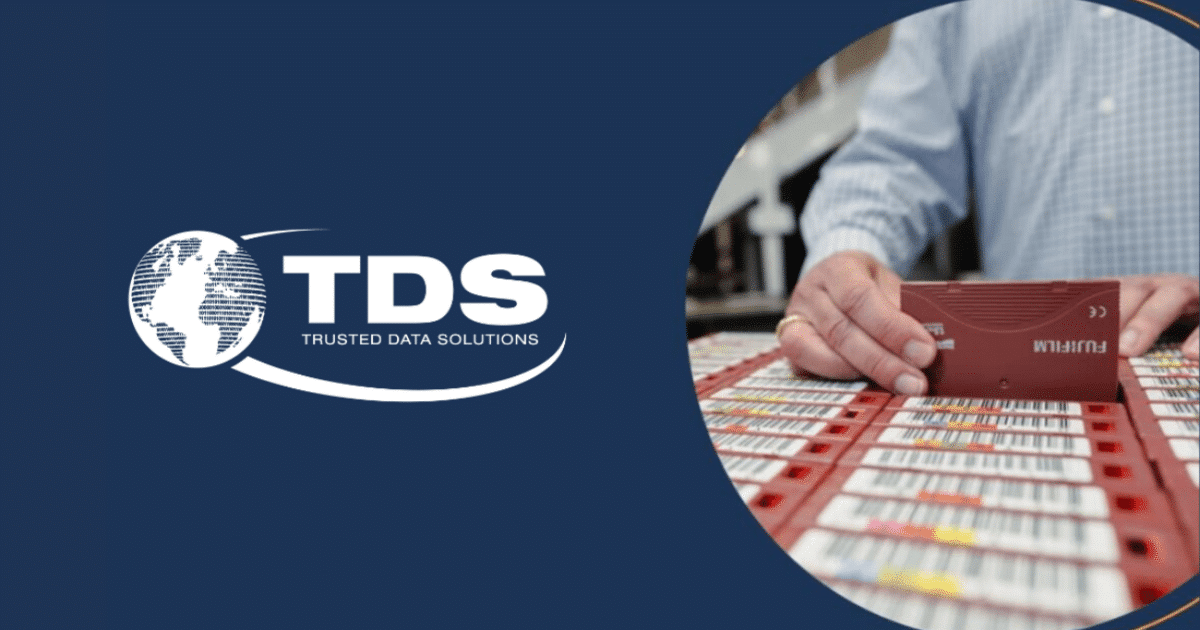Tape was never intended as the go-to for long-term data retention – its purpose was never to act as a searchable archive – yet for many organizations today, here we are.
To understand how we arrived here, we have to look into the history of backup tape technology. Originally, tape as a medium for recording data, was designed to be a disaster recovery (DR) solution in the event of a system crash or any other incident that could impact ongoing business operations. To that end, the data backed up to tape simply represented a mirror of the entire system at the time the backup was made.
Without a better solution, beyond simple daily or weekly data backups, it quickly became common practice to keep certain data stored on tape for longer periods of time. It is now common practice to store data on tape for seven years or more, often archiving those tapes at an off-site facility to be recalled if or when a restoration was necessary. Thus, tape was no longer used solely as a backup for DR purposes – its original intent – but also to retain data for historical purposes. From a technology standpoint, greater focus was placed on the ability to store more and more data than on the ability to identify and retrieve that data when necessary.
The Challenges of Tape
From a Data Protection perspective, it is the role of IT teams to back up data and to be able to quickly restore it in the event of a system failure. If all data is lost, then a restoration of data from a known recovery point is where IT focuses its efforts.
However, archiving data on tape represents a far different purpose than backing up data for disaster recovery. Since tape systems were not designed to be archives, from which individual documents or emails could easily be retrieved, organizations have now learned the hard way that restoring (sometimes) large amounts of data from tape is often quite the opposite of easy.
First, tape isn’t a searchable medium, particularly when searching for a specific piece of data. In fact, when large quantities of data are backed up to tape, those data sets are oftentimes spread between multiple tapes. As a result, restoring specific data, including particular emails or documents, can be as difficult and time consuming as finding the proverbial needle in a haystack.
To illustrate simply; imagine looking for a 40-page document in a file cabinet, but each page is stored in different parts of the cabinet. Without an index or the ability to simply type in a search string and locate something, you have to search through each and every part of the cabinet to find the exact 40 pages you need. Locating that document is time consuming, if not impossible.
That is the scenario IT staff could be facing when a request for restoration arises. The situation worsens as these requests often come from legal or compliance teams, armed with a specific date by which the data needs to be restored! Significant pressure is added since regulators, for example, have punitive powers. Even so, under some circumstances, if legal determines that it will cost $10,000 to settle a ‘matter’ or $50,000 to locate and retrieve the data for review, they may well decide to settle. An important factor here is the ability to understand restore costs (only one element of the e-Discovery process) in order to make such determinations at an early stage.
Is There a Better Way?
At Trusted Data Solutions (TDS), we have developed proprietary tools & techniques that enable us to identify and restore information from all physical and logical backup tape formats, commercially available over the past 30 years. A major benefit of our approach is that we don’t need to follow the typical approach of building and maintaining the original infrastructure that created the backups in order to locate and restore the data, with the added benefit that our solution is easily scalable to handle even the largest requirements. Our solutions are delivered either as:
- A Managed service, whereby TDS creates and maintains a restoration capability that matches the client’s requirement, provides targeting and restoration on-demand, via a legally defensible, pre-agreed workflow, and enables the client to eliminate the legacy infrastructure and all associated costs and risks.
- A Project-based ad-hoc restoration capability, whereby the client is responsible for targeting tapes contained required data and we act as a trusted data retrieval vendor. In this instance the client still retains some responsibility maintaining elements of their legacy environment(s).
In both cases, TDS relieves the burden of restoring data from the IT team and saves our clients valuable time and money in the restoration process.


